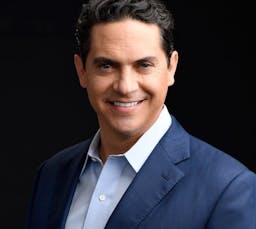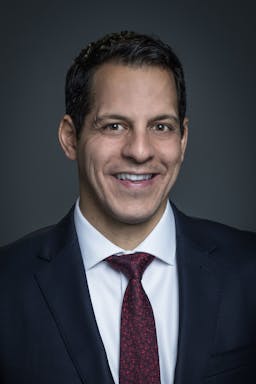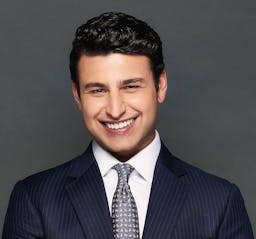Kurt Zaner
Zaner Law
Its hard to write a paragraph that defines who you are.
Who am I? Do we define ourselves? Or do others define us? Or do our actions define us? Identity is challenging. Am I defined by my journey as a Trial Lawyer who wages epic battles with evil corporations and insurance companies? Am I defined by my 7 and 8 figure verdicts? Am I defined by the confidential settlements I can't talk about? Or am I defined by the $50,000 settlements that change my client's lives? Money is not success. But money is success. Am I defined by my childhood? Growing up in South Florida, always wanting to be an actor, a trial lawyer, or a president of something? Does serving as high school student body president make a doosh? I failed (quit) my movie star pursuit in Hollywood, does that boost my cred or detract from it? Am I defined by family?
My three young boys (1,4,6) mean more to me than any case and I would quit practicing law tomorrow if it was somehow necessary to help my kids. There isn't much I wouldn't do for them. I wish I had more hours in the day to spend with them. And yet, when I look at them, I think of my toxic tort client who was diagnosed with Leukemia at 18, has lost one leg and likely another because of a company's toxic emissions, and I imagine if this happened to one of my children. Or am I defined by my pursuit of Karate and mastery of the bow and spear so that one day I may fight like the Viper of Dorne? I want to be the Champion of those who cannot fight for themselves. Who is John Galt?
Creating Drama at Trial – how to tell a story in trial through dramatic theatrical techniques
Most lawyers are boring and bore jurors into not caring. Or worse, they try too hard to entertain them and make the jurors hate them. We need to find a happy medium – keeping the jurors entertained and caring about your case, without pushing them away by acting over the top. I trained as a stage actor throughout college and moved to LA upon graduation to purse acting before going back to law school. I have found that learning how to emote and act brings clarity, passion, emotion to your presentations.Most jurors exposure to lawyers involves watching lawyers on TV. So we need to give them what they want.
I will teach and model how to pick your moments to use dramatic techniques throughout trial to keep them entertained and trusting you.You will not be "acting" in the courtroom, you will be living your true self and expressing your full range of authentic emotions and maximizing your presentation skills with an eye towards your listener/watcher. This will run the full gamut of trial – from Voir Dire, to Opening, Witnesses direct and cross, and Closing.These techniques include speaking directly to your client, using pauses, incorporating defense counsel into the story theatrically, and story telling with emotion and intention.Its gonna be a hoot.
Live Voir Dire with a Premises Case
Kurt will conduct a live voir dire with a premises case with this fact pattern.
Steve Straughen was a well site supervisor at an oil and gas frack site. All of the oil extracted from the ground was being deposited in large frac tanks - rectangular tanks about the size and shape of a mobile home. While investigating strange sounds from the top of the tank, the tank exploded sending Steve 50 feet into the air. Steve survived with severe orthopedic injuries, but ultimately lost his leg. The tanks exploded because they were poorly maintained and delivered to the site with holes in them.
Kurt will Voir Dire on the following issues:
Brutal Honesty
The Justice System
Lawsuit Abuse
Burden of Proof
Money Damages
Money for Pain/Impairment
How much Money is too much
Sympathy
Safety Protocols
Corporate Responsibility
Personal Responsibility
Kurt will meet with students prior to the event by Zoom to review the case and his strategy for writing and practicing his voir dire
Voir Dire in 30 minutes or less
Too often we don't have enough time for Voir Dire. When you have only 30 minutes or less, learn how to hit all the big topics (tort reform, burden of proof, money for pain and large damages) while both planting seeds for trial and discovering toxic jurors you need to strike.
Premises Liability Master Class
- Building the case
- Case selection
- Early Actions
- Site inspections,
- Expert hires,
- Case evaluations
- Experts
- What kind to hire – architects, engineers, human factors, regulators, etc.
- When do you hire
- Best places to find them
- Filing the Case
- Setting up the claims and parties
- Pleading PLA v. Negligence
- Document Discovery
- Documents needed
- Discovery Request Strategy
- ESI
- Deposition discovery 30b6 Depos
30b6/PMKs
- Topics
- Depo strategy
- Rules of the Road
- When to press
Fact witnesses
Order of depositions
Your client’s deposition
5. Trial Preparation
- MILS
- Demonstratives v. Chart Paper
- Focus groups
- Order of witnesses
6. Jury Selection in Premises Cases
- Questions you must ask
- Questions you would like to ask
- Questions you shouldn’t ask.
7. Opening
- Educate, inform, and planting seeds
- Diffusing defenses
- Introducing clients damages
8. Cross of Defense Witnesses
- Strategy
- Drama
- Depo Clip Integration
9. Closing and Rebuttal
- Will demonstrate PLA closing with slide deck
- What to save for rebuttal – briefcase decisions?
Writing a Story – Win your case in a page and a half
Lawyers hate legal writing. And for good reason - its terribly boring. So stop writing like a lawyer and tell a damn story. This CLE will teach how to write in a way that moves the reader to want to rule in your favor. You can use this technique in every brief you write (from discovery disputes to substantive motions) maximizing the chances you will be able to introduce the evidence you need at trial. Without winning the briefing, you may never be able to present the case you want at trial. I learned this after working a federal law clerk for a year right after law school and literally falling asleep at my desk, only to wake up and see the Judge staring at me.
As exemplars, I will use two cases in which a winning brief on spoliation and a winning punitive damage brief led to two eight figure verdicts in CRPS electrocution cases I tried with Sarah McEahern; both had past meds under 300K. I will break down the cases and the briefs and show you how to use the writing techniques I have developed over the years and what they look like in action. I will also show how the evidence I developed in the wining briefs was dramatically introduced at trial. The presentation, like my writing, will entertain you like Maximus in Africa. If you like Lord of the Rings and Game of Thrones, you will be even more entertained.
TLU Live HB Agenda
Track 1
Breakfast
7:30am - 9:30am
Hosted by
- 9:00a

 TLU ProfessorLecture Title Soon To Be Announced
TLU ProfessorLecture Title Soon To Be Announced Coffee & Snacks
Hosted by
- 10:15a

 TLU ProfessorLecture Title Soon To Be Announced
TLU ProfessorLecture Title Soon To Be Announced Coffee & Snacks
Hosted by
- 11:30a

 TLU ProfessorLecture Title Soon To Be Announced
TLU ProfessorLecture Title Soon To Be Announced Lunch
Sponsored by
- 2:00p

 TLU ProfessorLecture Title Soon To Be Announced
TLU ProfessorLecture Title Soon To Be Announced Coffee & Snacks
Hosted by
- 3:15p

 TLU ProfessorLecture Title Soon To Be Announced
TLU ProfessorLecture Title Soon To Be Announced Coffee & Snacks
Hosted by
- 4:30p

 TLU ProfessorLecture Title Soon To Be Announced
TLU ProfessorLecture Title Soon To Be Announced
Track 2
Breakfast
7:30am - 9:30am
Hosted by
- 9:00a

 TLU ProfessorLecture Title Soon To Be Announced
TLU ProfessorLecture Title Soon To Be Announced Coffee & Snacks
Hosted by
- 10:15a

 TLU ProfessorLecture Title Soon To Be Announced
TLU ProfessorLecture Title Soon To Be Announced Coffee & Snacks
Hosted by
- 11:30a

 TLU ProfessorLecture Title Soon To Be Announced
TLU ProfessorLecture Title Soon To Be Announced Lunch
Sponsored by
- 2:00p

 TLU ProfessorLecture Title Soon To Be Announced
TLU ProfessorLecture Title Soon To Be Announced Coffee & Snacks
Hosted by
- 3:15p

 TLU ProfessorLecture Title Soon To Be Announced
TLU ProfessorLecture Title Soon To Be Announced Coffee & Snacks
Hosted by
- 4:30p

 TLU ProfessorLecture Title Soon To Be Announced
TLU ProfessorLecture Title Soon To Be Announced
Track 3
Breakfast
7:30am - 9:30am
Hosted by
- 9:00a

 TLU ProfessorLecture Title Soon To Be Announced
TLU ProfessorLecture Title Soon To Be Announced Coffee & Snacks
Hosted by
- 10:15a

 TLU ProfessorLecture Title Soon To Be Announced
TLU ProfessorLecture Title Soon To Be Announced Coffee & Snacks
Hosted by
- 11:30a

 TLU ProfessorLecture Title Soon To Be Announced
TLU ProfessorLecture Title Soon To Be Announced Lunch
Sponsored by
- 2:00p

 TLU ProfessorLecture Title Soon To Be Announced
TLU ProfessorLecture Title Soon To Be Announced Coffee & Snacks
Hosted by
- 3:15p

 TLU ProfessorLecture Title Soon To Be Announced
TLU ProfessorLecture Title Soon To Be Announced Coffee & Snacks
Hosted by
- 4:30p

 TLU ProfessorLecture Title Soon To Be Announced
TLU ProfessorLecture Title Soon To Be Announced
Track 4
Breakfast
7:30am - 9:30am
Hosted by
- 9:00a

 TLU ProfessorLecture Title Soon To Be Announced
TLU ProfessorLecture Title Soon To Be Announced Coffee & Snacks
Hosted by
- 10:15a

 TLU ProfessorLecture Title Soon To Be Announced
TLU ProfessorLecture Title Soon To Be Announced Coffee & Snacks
Hosted by
- 11:30a

 TLU ProfessorLecture Title Soon To Be Announced
TLU ProfessorLecture Title Soon To Be Announced Lunch
Sponsored by
- 2:00p

 TLU ProfessorLecture Title Soon To Be Announced
TLU ProfessorLecture Title Soon To Be Announced Coffee & Snacks
Hosted by
- 3:15p

 TLU ProfessorLecture Title Soon To Be Announced
TLU ProfessorLecture Title Soon To Be Announced Coffee & Snacks
Hosted by
- 4:30p

 TLU ProfessorLecture Title Soon To Be Announced
TLU ProfessorLecture Title Soon To Be Announced
















































































































